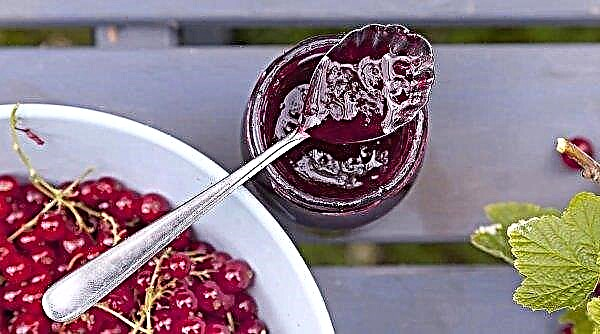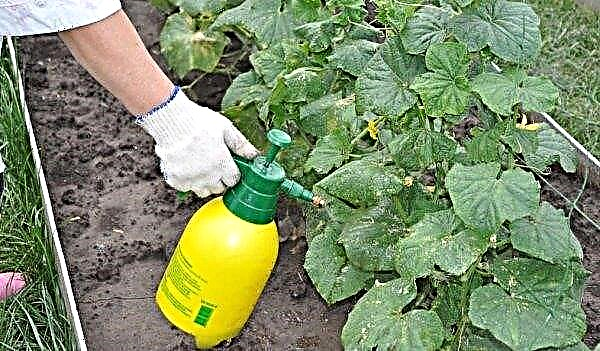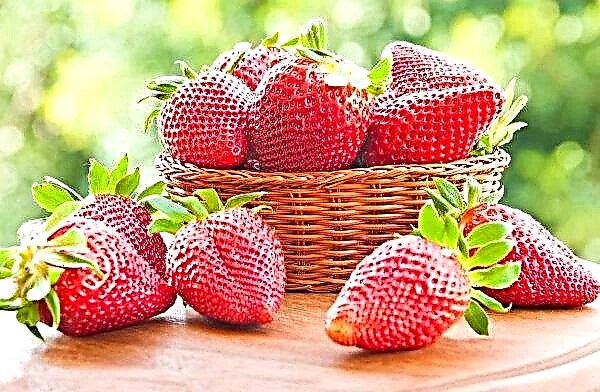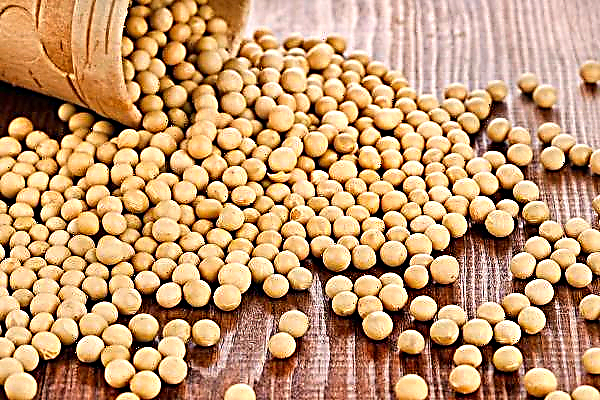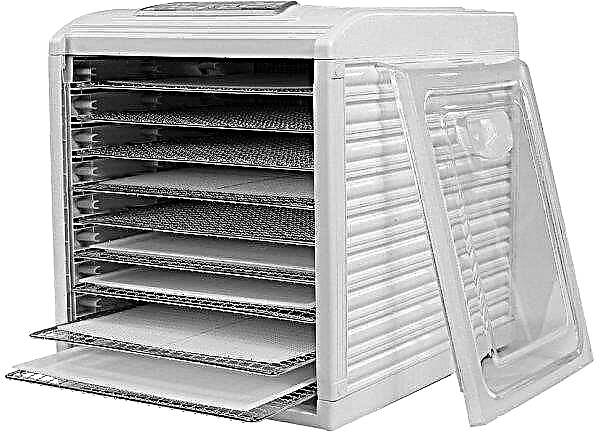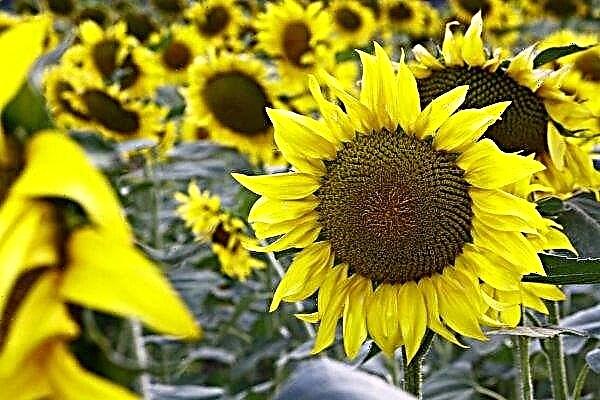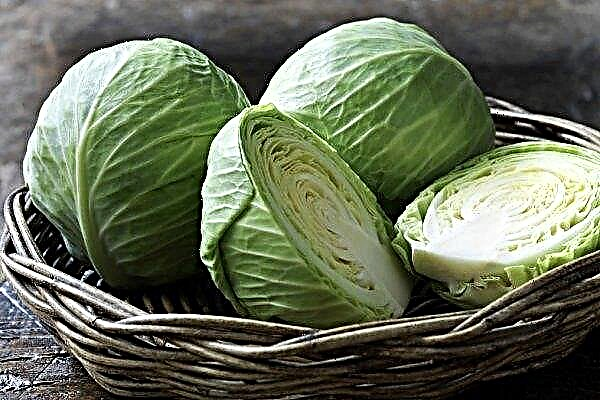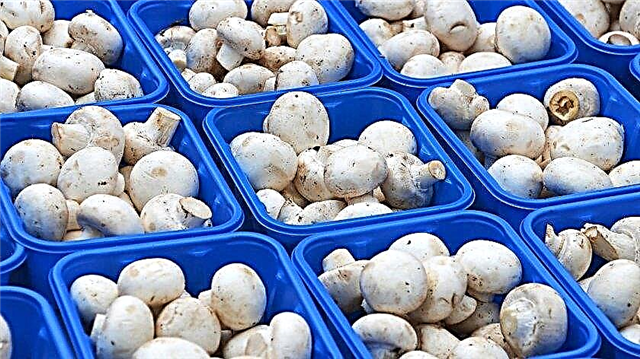Motley codium is a popular houseplant with brightly colored foliage. Its detailed characteristics and basic growing rules are presented below.
Plant morphology
Representative of the family Euphorbiaceae, this shrub belongs to perennial species. The evergreen from the jungle of India and Malaysia is sometimes also called croton.
Important! The euphorbia family emits poisonous juice on a scraper or stalk, which is especially dangerous for children and pets. When working with the plant, gloves must be worn.
Codium has the following features:
- direct branching stem, in natural conditions - up to 3-4 m, in indoor plants - 50–70 cm;
- leathery leaf length up to 30 cm;
- the shape of the leaves is diverse (linear, lanceolate, oval, etc.);
- motley color, depending on the variety, yellow, green and red shades, with prominent veins;
- a dioecious plant forms female and male flowers collected in inflorescences;
- rarely blooms, on female flowers there are no petals, male ones have a whisk and a cup.
 The plant has been known in Europe since the 19th century and was initially grown only in greenhouses, since it was considered demanding for high temperature. Modern codecs are represented by a variety of varieties that differ in the shape and color of the leaves. There are new varieties with curled leaves - "curly". The plant grows with the color and contour of the leaf, as it ages.
The plant has been known in Europe since the 19th century and was initially grown only in greenhouses, since it was considered demanding for high temperature. Modern codecs are represented by a variety of varieties that differ in the shape and color of the leaves. There are new varieties with curled leaves - "curly". The plant grows with the color and contour of the leaf, as it ages.- After careful selection, modern plants have these advantages:
- much more durable than traditional, and also less capricious;
- in winter only a few leaves are lost;
- quickly recover after missed watering.
The most popular varieties are:
- Petra - with thick veins in the center of the leaf and mostly yellow-green color.

- Norma - a variety with hard long dark green leaves, on which are yellow spots and red veins.

- Sunny star - remembered by beautiful narrow yellow-green leaves, decorated with a central yellow vein and a golden border, as well as thin shoots.

- Gold star - narrow-leaved variety with rosettes of leaves resembling stars, painted with yellow specks.

How to choose the colorful motley when buying
To buy a healthy plant, you need to carefully examine it before buying. It is necessary to pay attention to the following parameters:
- check the underside of leaves for plaque or cobwebs, pest bites;
- leaves should be bright, with a natural sheen;
- a bare trunk is undesirable;
- twisted leaves (if this is not a sign of the variety) signal an illness.
Did you know? Kodiyum is sometimes called the "Joseph’s cloak", due to the bright color of the foliage, reminiscent of a luxurious fabric from biblical tales.
Optimal conditions for the plant
To get full decorativeness, the codium needs proper placement, as well as compliance with the basic rules of planting.
Choosing a place and lighting
The bright color of the plant appears only in bright light. Some varieties tolerate even direct sunlight (except midday). An eastern or western window would be an ideal place. If a plant is moved to maintain the required amount of light, then this must be done gradually, with a period of adaptation.
Requirements for temperature and humidity
Codium grows at ordinary room temperature, and as for the winter months, it should not be allowed to drop below + 16 ° C. Drafts and sudden changes in temperature must also not be allowed. The plant needs high humidity, which is supported by regular spraying and rubbing the leaves, installing the pot in a tray with wet expanded clay. Additional procedures are especially important during the period of operation of heating appliances, when the natural humidity in the room decreases.
What should be the soil for planting
A plant transplant is performed in early spring, if its root system has filled the tank completely. Young bushes need an annual container replacement, and adults need about every 2-3 years.
Important! When using foliar top dressing, it is necessary to reduce the concentration of fertilizer by 2 times.
The optimal soil will be a mixture in the following proportions:
- peat, turf and leaf land (disinfected) - 1 part each;
- sand - 1 part.
How to choose a pot for a plant
Kodiyum does not require large capacity. Compared to the previous one, the pot should be larger in diameter by about 2-3 cm. You can use both ceramics and plastic containers. The bottom of the container must be filled with drainage.
Features of home care
Kodiyum needs careful leaving, showing possible problems with a condition of leaves. It is especially important to observe the watering regime.
Did you know? In esoterics, codium is considered a plant with powerful energy. It has a beneficial effect on the atmosphere in the house, cleansing it of negative energy.
Watering
The plant negatively refers to both drying out of the soil, and to stagnation of water and constant dampness. The need for watering is determined by the state of the upper soil layer, waiting for the first 1-2 cm to dry. On average, moistening of the earth will be necessary 2-3 times a week in the warm season and 1 time in the winter. For irrigation use settled soft water, the temperature of which should be 1-2 degrees warmer than room temperature. If there is a lack of watering, the plant drops or lowers the leaves. If you quickly restore water balance, the leaves will become elastic again.
For irrigation use settled soft water, the temperature of which should be 1-2 degrees warmer than room temperature. If there is a lack of watering, the plant drops or lowers the leaves. If you quickly restore water balance, the leaves will become elastic again.
Spraying
Spraying helps maintain high humidity and also removes dust from foliage. Soft warm water is used for the procedure. Do not refresh the leaves at sunny noon - water droplets can cause a burn.
Top dressing
Fertilize under the bush every 2 weeks in the period from April to August. It is recommended to use ready-made mixtures for variegated or standard ornamental deciduous plants. In winter, the frequency of top dressing is reduced to 1 time per month.
Pruning
This plant usually does not need forming pruning. Sometimes pinching of the apex is used, which causes awakening of the upper and / or lateral buds and the growth of new leaves. Buds and peduncles are also removed, since they significantly reduce the decorativeness of the codium.
Breeding methods
The plant is easily propagated by cuttings and layering, however, you can try to grow it from seeds.
Seeds
Only fresh seeds are suitable for sowing, since they quickly lose their germination. Sowing is carried out in February. To accelerate growth, you can soak the seeds in Kornevin or lower them in water at a temperature of + 60 ° C and leave for a day. The prepared seeds are placed 1 cm deep in the ground, covered with a film and left to germinate at a temperature of + 22 ° C, maintaining a high soil moisture level. The first shoots should appear in a month. Transplantation into separate containers is carried out after the appearance of the third true leaf.
Cuttings
Propagation by cuttings is performed according to this scheme:
- For cuttings, lignified shoots with one bud and two leaves about 10 cm long are cut. At the same time, the upper cut is carried out at an angle of 90 ° and treated with crushed activated carbon.
- Cuttings are placed in warm water with the addition of coal, which allows you to remove milky juice.
- Then the cuttings are dried and the bottom cut is treated with a growth stimulator.
- Cuttings are planted in pots, placing them 2-3 pieces in 2-3 cm deepenings prepared with a stick.
- Pots are covered with a film or a jar and placed in a warm place (approximately + 25 ° C). It is necessary to constantly monitor the level of humidity and spray daily.
- Cuttings root for about 1.5 months, after which they can be planted in individual containers.
Video: propagation by cuttings of mottled codium
You can root cuttings and water. The container should be made of dark glass, and a tablet of activated carbon should be dissolved in water. The term for the appearance of roots with this method is about 2 months. You can also try to root the cut sheet.
Important! When planting, the leaves on the cuttings are better to collect in a tube and bind to reduce evaporation and retain moisture.
Layering
If the plant has bare shoots, it can be propagated by air layering. It is best to conduct such a reception in the summer.
The first method of propagation by layering is as follows:
- Stepping back from the top of the shoot 15 cm, cut the bark in a circle, forming a kind of ring with a width of 8-10 mm.
- Treat the “ring” with a rooting agent and wrap it with moist moss or peat, then cover with a dark film. In this case, the lower edge of the sac should fit snugly against the stem, and the upper should have a small gap for moisturizing.
- When roots form in 1.5–2 months, cut the stalk under the lower edge of the film and plant it in the soil.

The second way is as follows:
- Press a branch with a lignified shoot to the soil and fix it with a hairpin, then sprinkle with soil.
- At the lower edge of the branch, make an incision. Wipe the juice and treat with a root. Maintain humidity and warmth.
- After the appearance of the roots, the process should be transplanted.
How to deal with diseases and possible pests
The most common problems are related to errors in the care of the plant:
- with sharp fluctuations in temperature, excessive dryness of the air or soil, the foliage falls off;
- yellowing of the leaves may be due to a lack of nutrients or waterlogging;
- cracks in the leaves are a sign of excessive nitrogen content;
- wrinkled or painful spotted leaves indicate poor indoor air;
- with a lack of lighting, the leaves will lose their bright color.

Under adverse conditions, codium can be affected by some pests:
- spider mite often appears at low humidity and requires both washing the foliage and the use of insecticides (Fitoverm);
- from other plants the bush can become infected mealybug or scabbard against which you have to use special drugs ("Actara", "Spark").





